Djurgårdens are fourth in the Allsvenskan with 40 points from 22 matches — eight behind the leaders, IF Elfsborg, with 48 points.
One of Djurgårdens’ most notable features is their exceptional use of corner kicks. They are the team that scores the most corner kicks in Allsvenskan with seven goals, tied with Häcken. However, what distinguishes Djurgårdens from Häcken is that they have scored seven goals from corner kicks out of a total of 31 goals, which is about 22%. Häcken scored seven goals from corner kicks out of 52 goals, which is about 13%. This reflects the significant impact of corner kicks on Djurgårdens’ offence.
This tactical analysis will discuss Djurgårdens’ attacking tactics in corner kicks, which emphasises their significant reliance on set pieces to threaten their opponents’ goal.
Marcus Danielson’s dismarking
We won’t start with a specific routine or tactic, but we will start with the one on whom most of these routines depend. Marcus Danielson is incredibly good at escaping from his man-marker because he has all the necessities for dismarking; he is strong physically to push his marker away from him, intelligent, quick at his movements to deceive his marker with fake movements and finally, very good at jumping from a steady state.
In the first photo below, when the taker, in red, raises his hand, Danielson, highlighted in green, starts to move towards the near post, dragging his marker with him., but in the second photo, the taker starts to move and now Danielson changes the direction of his movement to the left, so when the taker, in red, touches the ball, in the third photo, the marker loses contact with the ball because he turns back following Danielson to the far post.
In the fourth photo, it is clear that he can’t follow the ball and Danielson at the same time, so when the ball becomes closer, he turns his head to see the ball losing contact with Danielson.
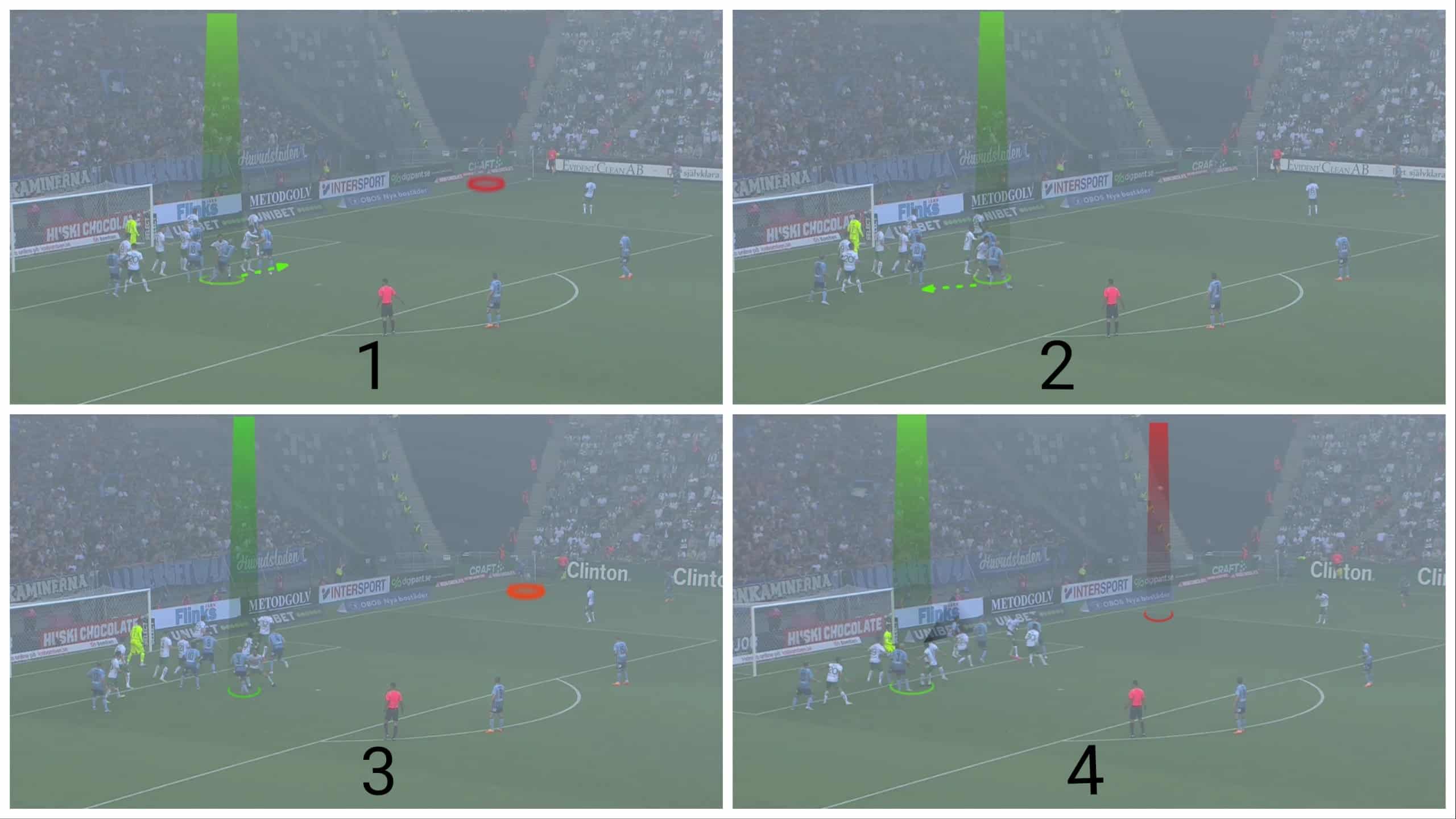
Now, in the first photo below, the ball is in the air, highlighted in red, while the marker gives his back to Danielson, in green, with the help of his mate’s small push between them, in yellow, so he can get the ball, as shown in the second photo, because he is also very good at jumping from a steady state using his hands to push opponents downward.
At the same time, two players, highlighted in yellow, are waiting for Danielson’s headed pass to the far post at the defenders’ blind side so one of them can easily get the ball, as shown in the third photo, and the result is a goal, as shown in the fourth photo.
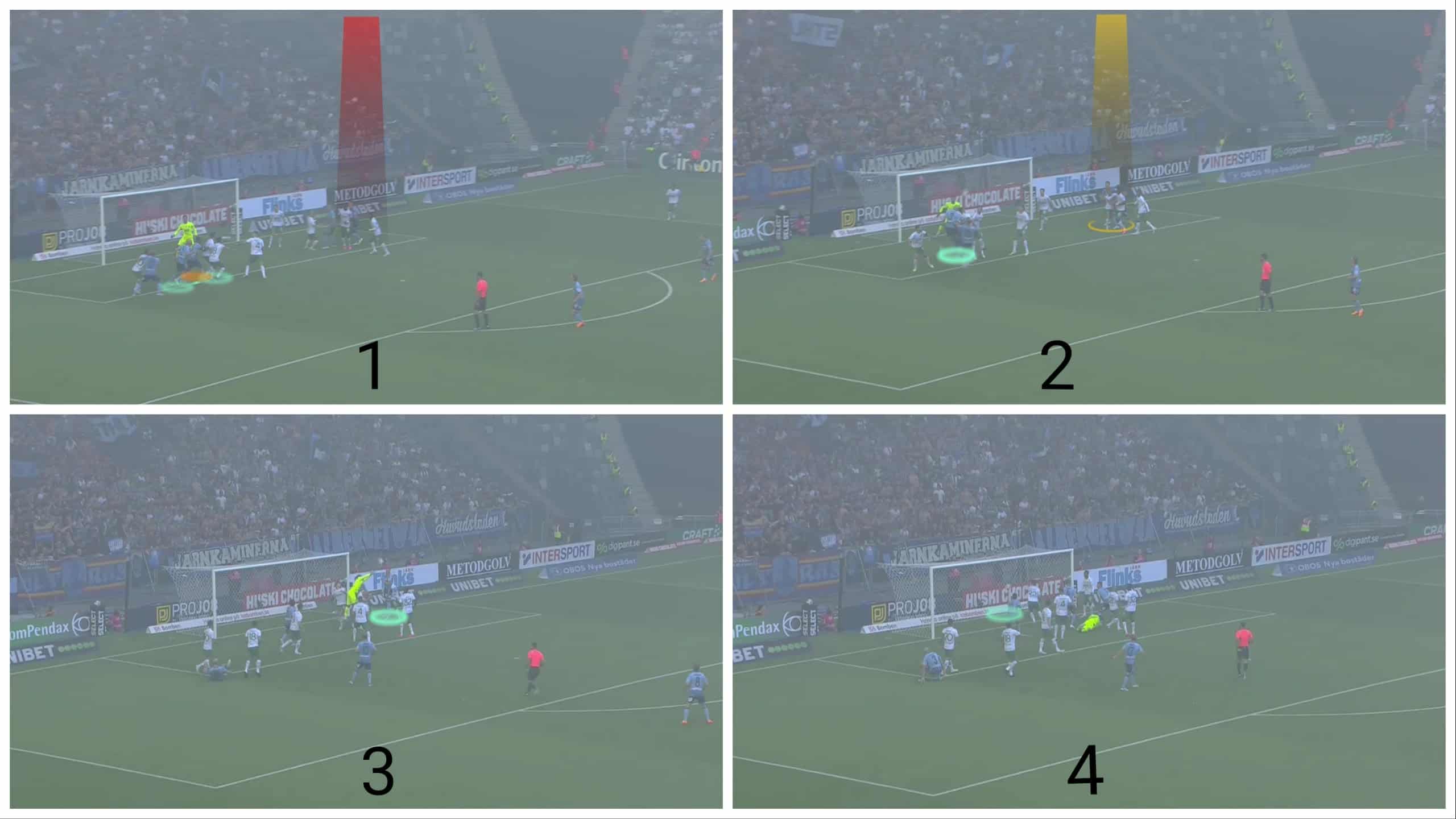
Floated crosses
To make the best use of Danielson’s ability to measure the ball winning the aerial duel, they also depend on floated crosses to isolate Danielson with his marker, giving him the time to move, measure the ball, push or deceive his marker and jump, as we will explain more below.
In the first photo, Danielson is with his marker, in green, while the taker is still moving. In the second photo, the ball is in the air, highlighted in red, and still in the air in the third and fourth photos, which means that the ball takes a long time in the air, giving a lot of time to the aerial duel, so we can see in this second photo Danielson measuring the ball that will land towards the far post, so he moves to the far post while looking at the ball pushing his marker who is looking to the ball in the air depending on the physical touch to keep following Danielson.
In the third photo, Danielson and his marker are raising their heads, touching each other and waiting for the ball, so the winner will be the one who can measure the ball and jump from a steady state, pushing the other downward, which happens in the fourth photo.
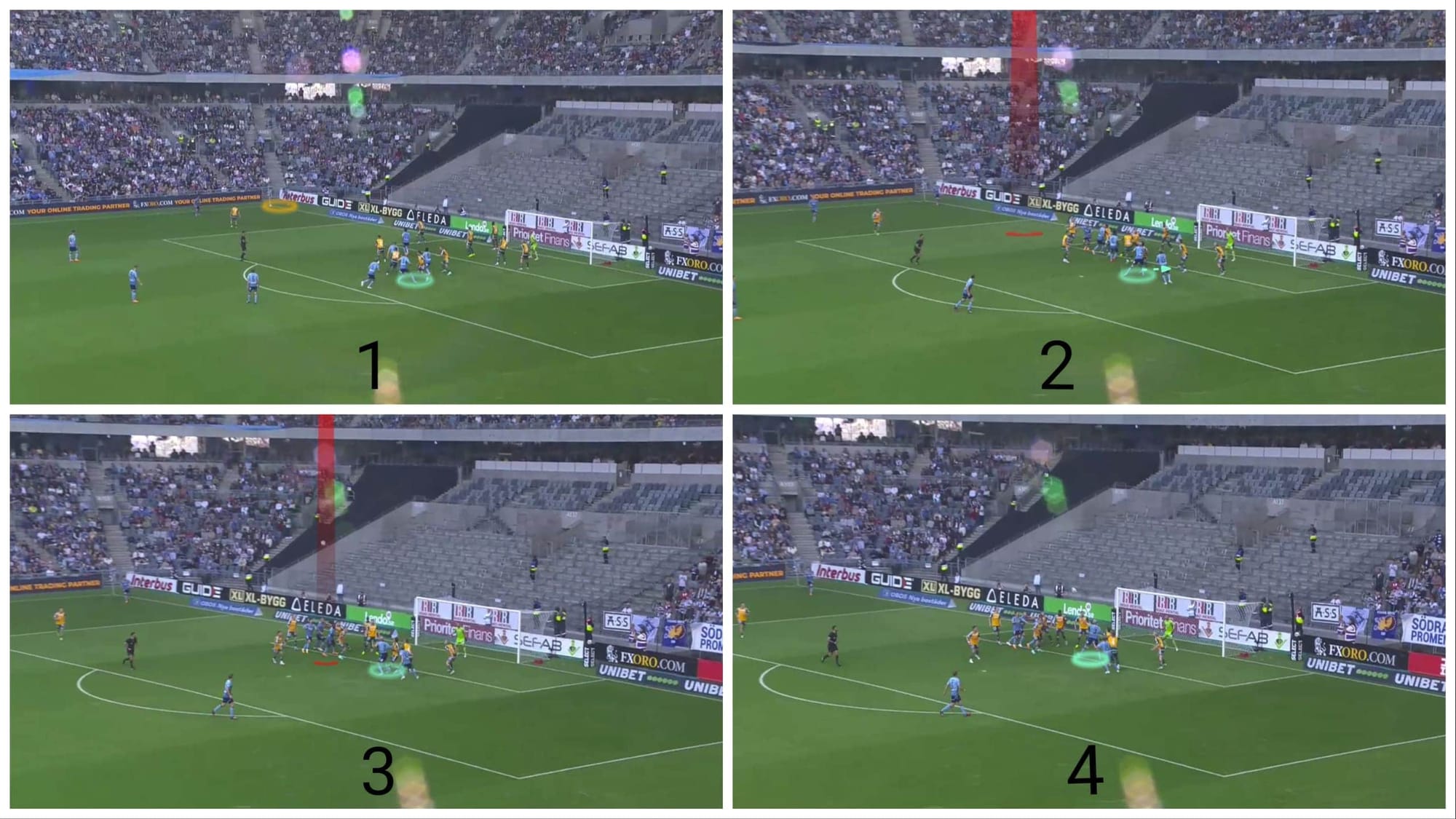
The result is a goal, as shown below.
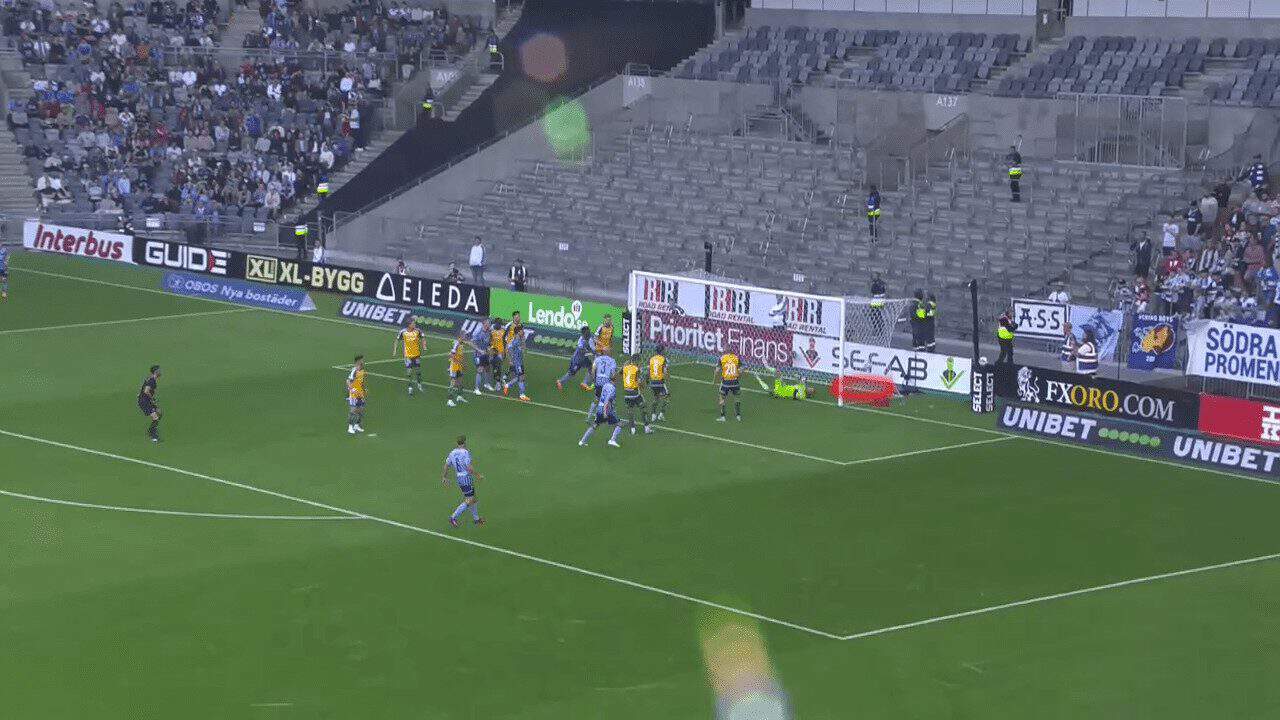
Using screens
Sometimes, they help Danielson escape from his marker by using screens, as we will explain below.
In the first photo, Danielson stands next to his mate, in green, against two man-markers, in yellow, but he runs in a curved run around his mate to make his mate stand in his marker’s path doing a screen for him, as shown in the second and third photos. In the fourth photo, Danielson, in green, is free to move to the far post on the edge of the six-yard, thanks to his mate’s screen, in yellow.
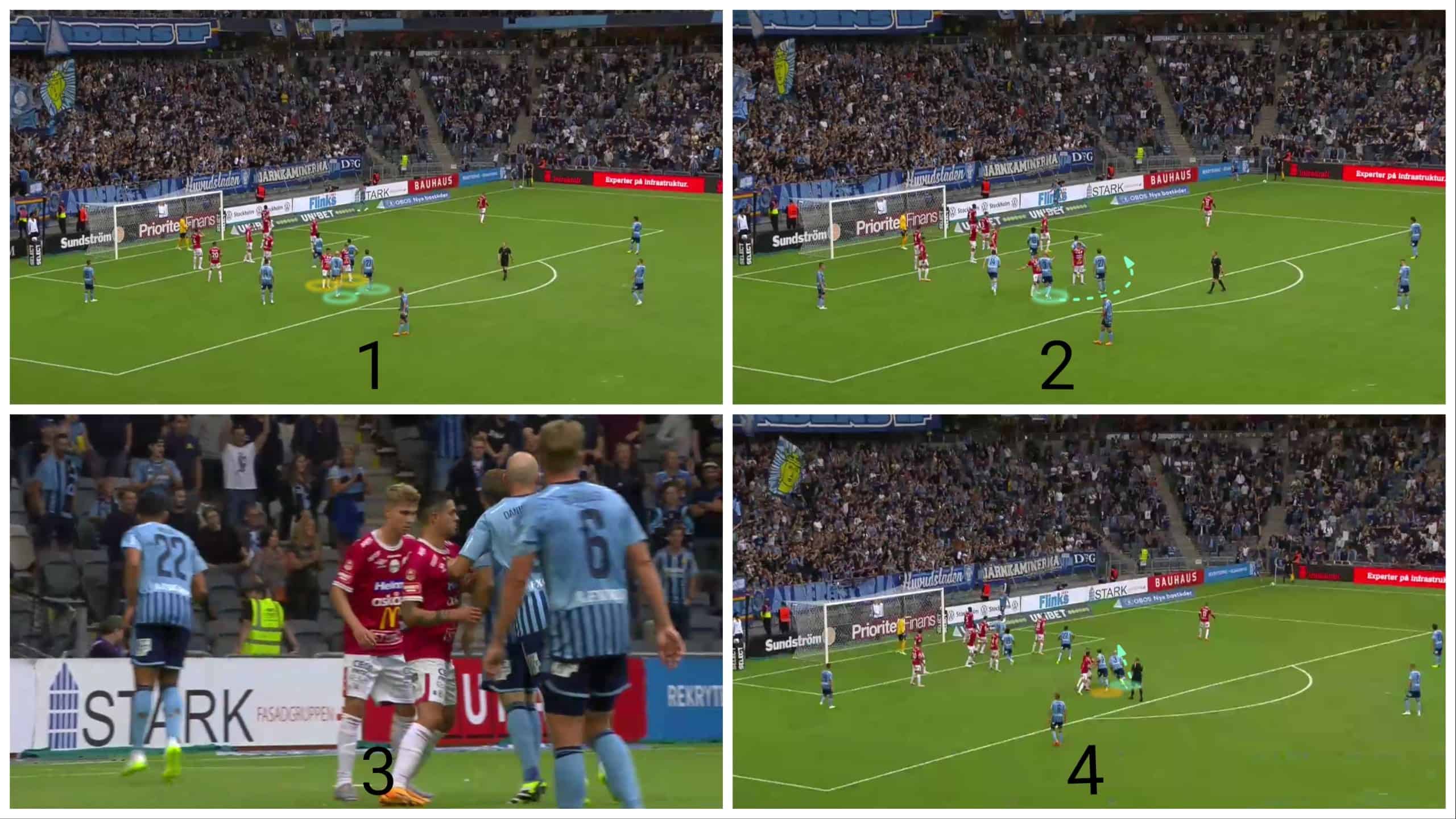
He gets the ball and scores a goal, as shown in the two following photos.
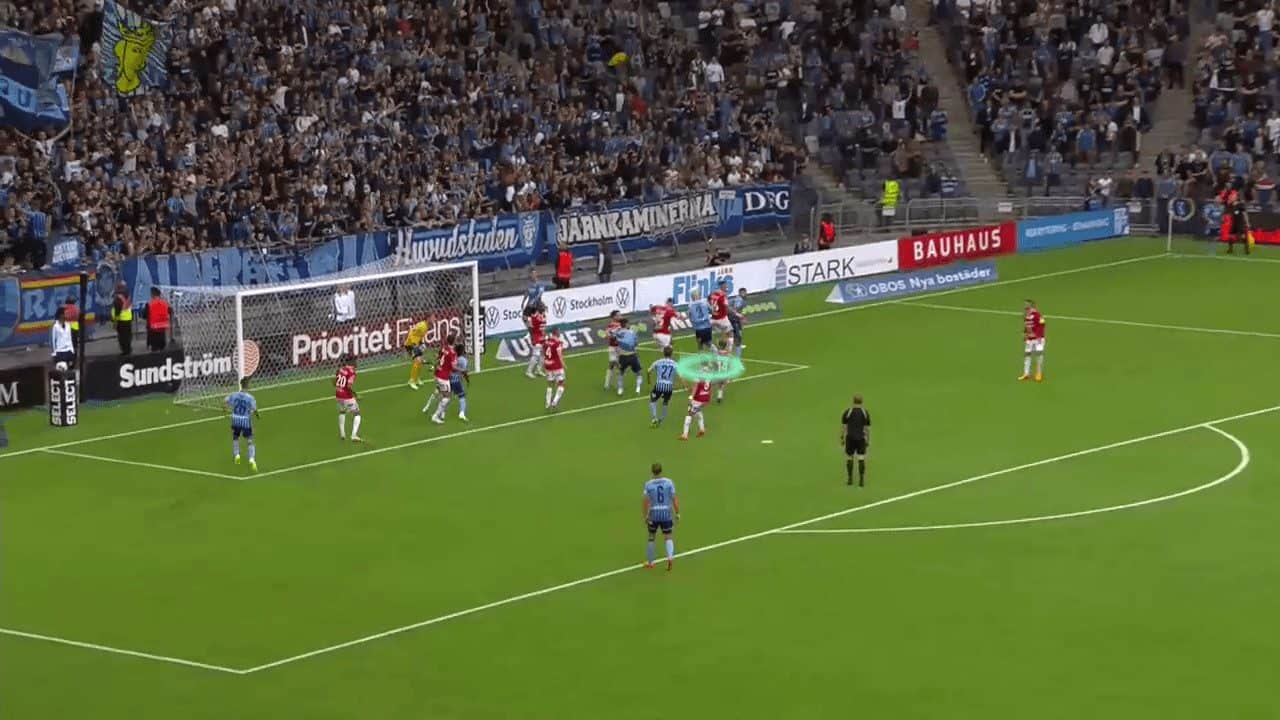
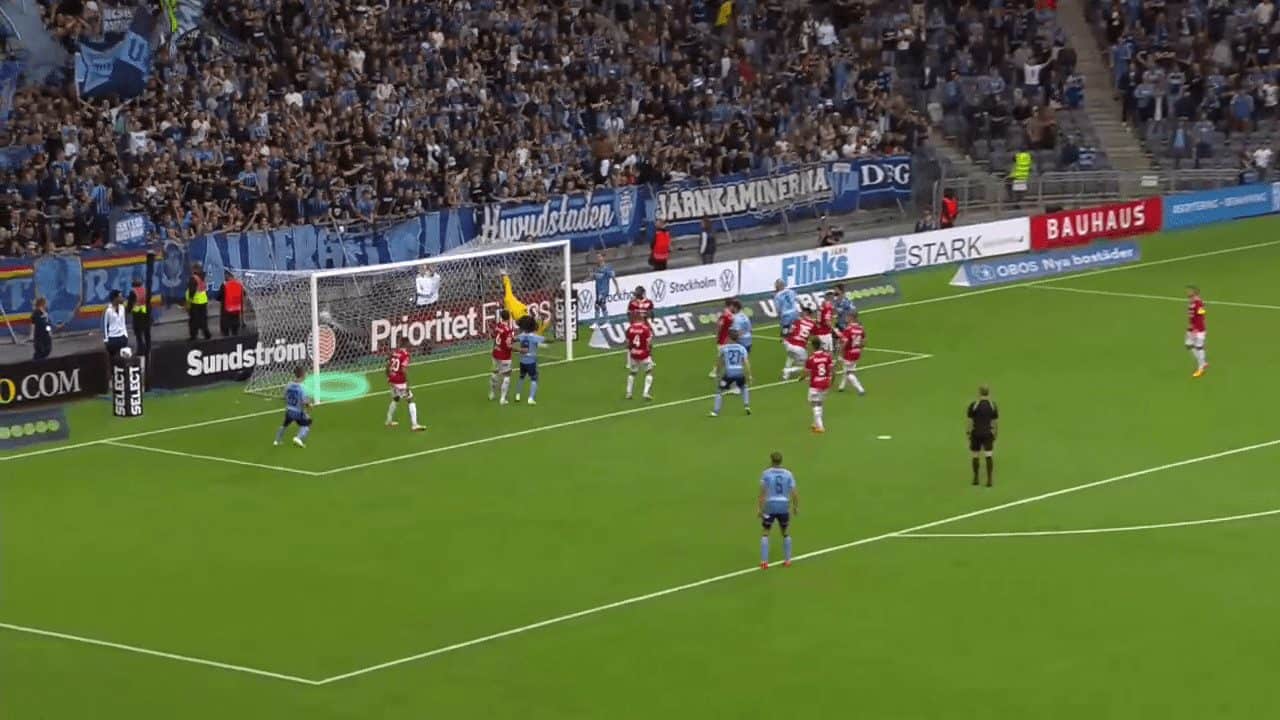
To face a player like Danielson, who is excellent at deceiving his marker and making him confused about the direction that Danielson will take, we suggest using two close zonal lines to make the most valuable areas safe in case Danielson escapes from his marker.
We suggest the defensive scheme below by using two close zonal lines, highlighted in green and yellow, making sure the spaces between defenders are small to make Danielson not free while jumping, in case he escapes from man-markers, shown below in blue.
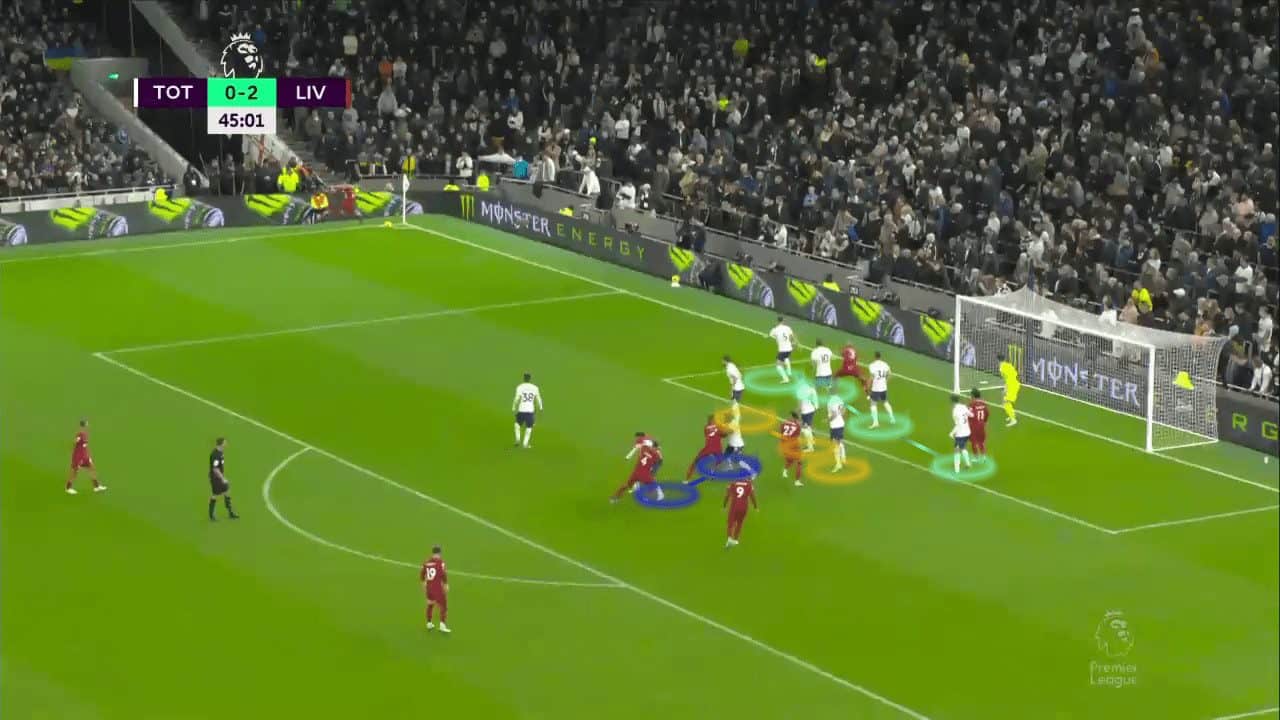
Using the rebound player
They have another trick, especially against the man-marking defending system, by using Danielson and all the attackers in the box as bait to deceive the defenders, making the rebound player free, as we will explain below.
In the first photo, the attackers start near the penalty spot, then they move to the near post, making the far post free for the rebound player, in green, as shown in the second photo. In the third photo, he crosses the ball to the three yellow attackers on the near post, but the cross is a little strong, so the yellow player can’t get the ball, as shown in the fourth photo.
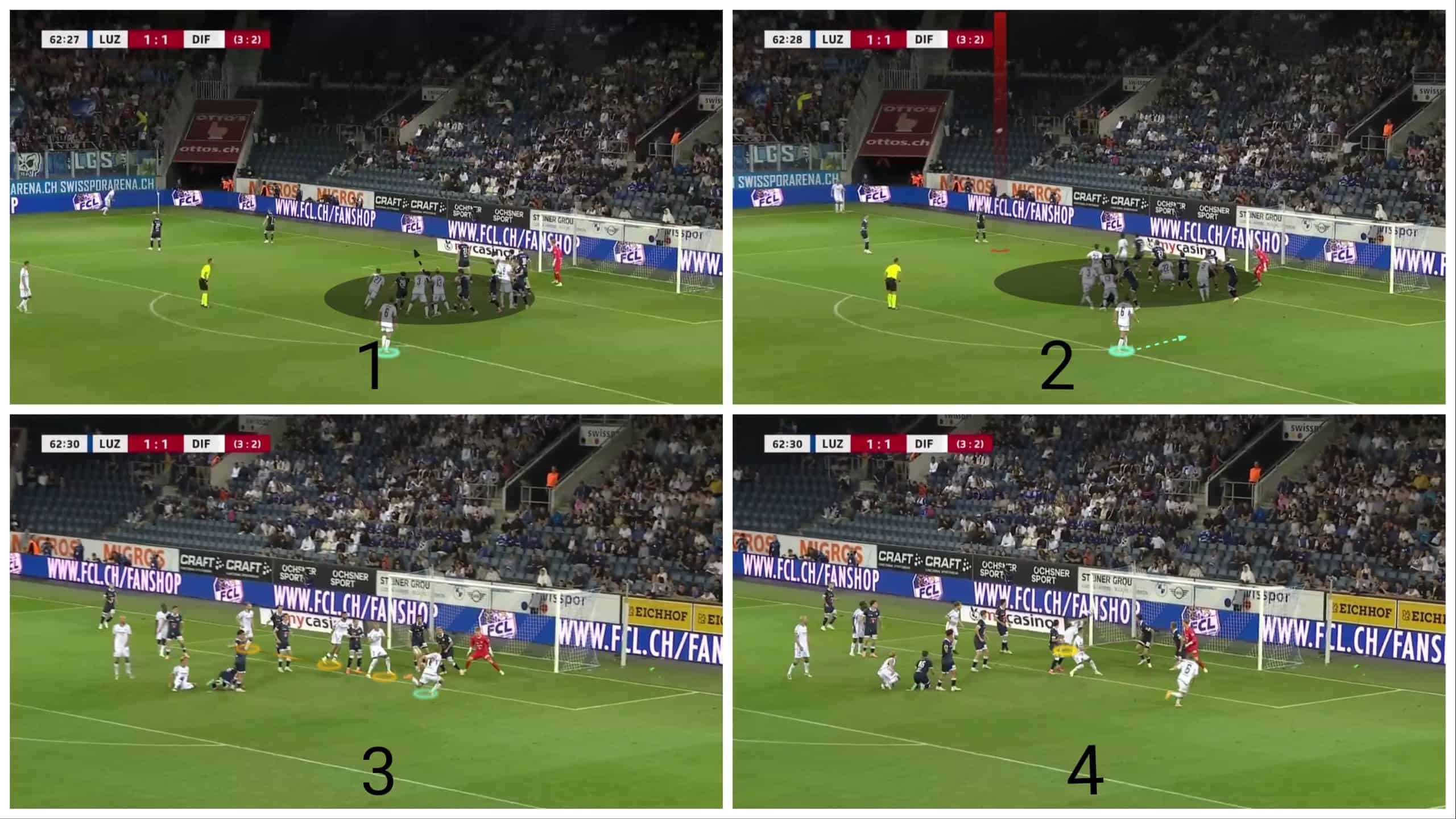
Short corners
As we all know, all teams need variation in their corner routines to be not expected, so they sometimes rely on short corners to empty the space on the far post by making all the attackers, including Danielson, move to the near post, dragging their man-markers, except one who moves to the far post, as we will explain below.
In the first photo below, the opponent defend with four zonal defenders, highlighted in green, three man-markers, highlighted in yellow and three players to face the short corner. After the taker passes the ball to the short-option attacker, the attacker in black, who is a little late to escape from man-marking, moves to the far post at the blind side of the last zonal defender who looks at the ball, so he gets free easily, as shown in the second photo.
In the third photo, the cross is a little inaccurate because it comes at the attacker’s back, so he is forced to step back, and then he can perform the headed shot, but the goalkeeper saves the ball, as shown in the fourth photo.
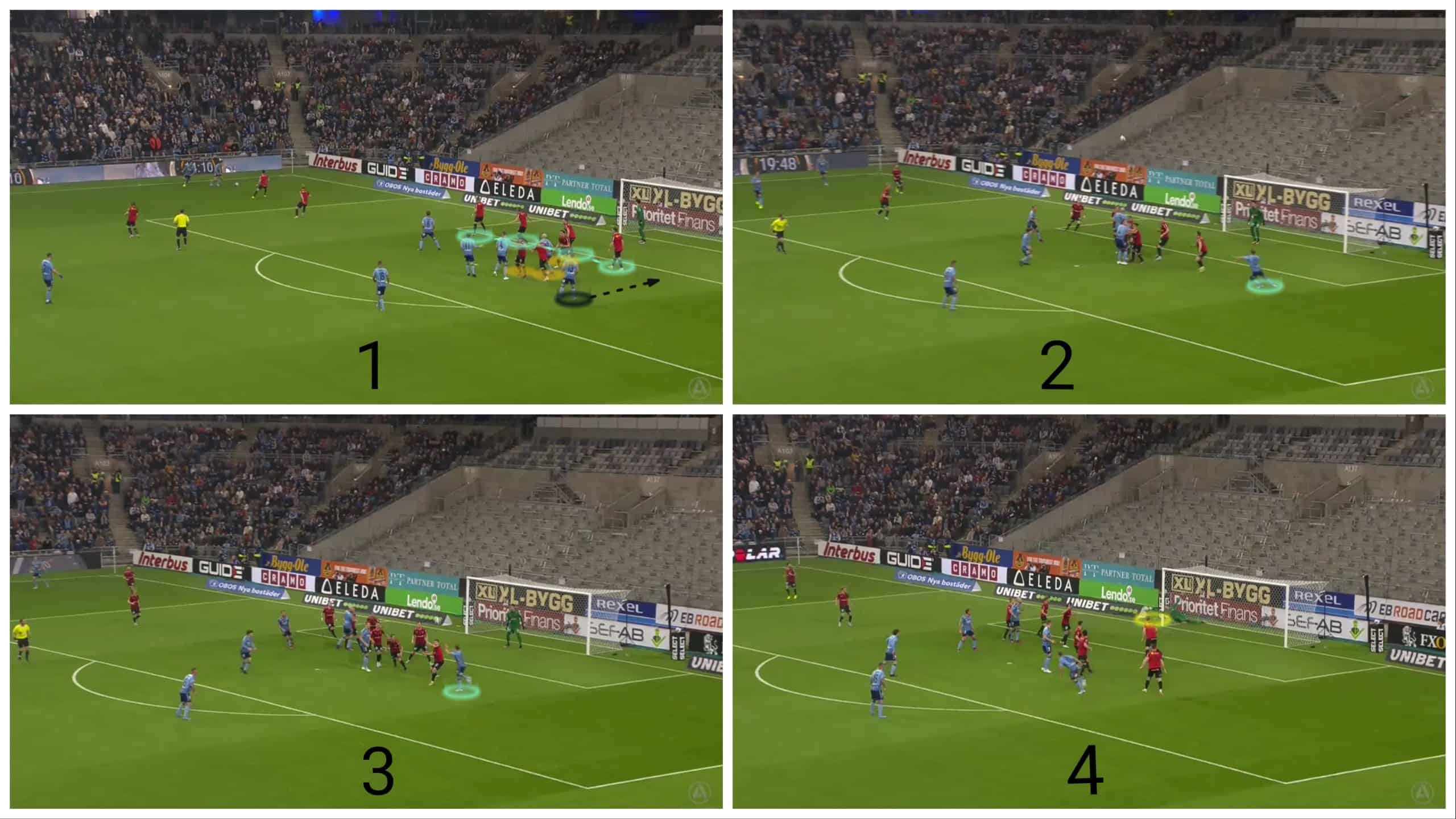
In the case below, the opponent defend with four defenders in the first zonal line, highlighted in green, and four players, highlighted in yellow, as man-markers, leaving only one player to face the short corner and one who starts in the box and should support him after the pass, if it happened. The difference, in this case, is that there is a man-marker to our targeted player in the targeted area behind the last zonal defender on the far post, the black area.
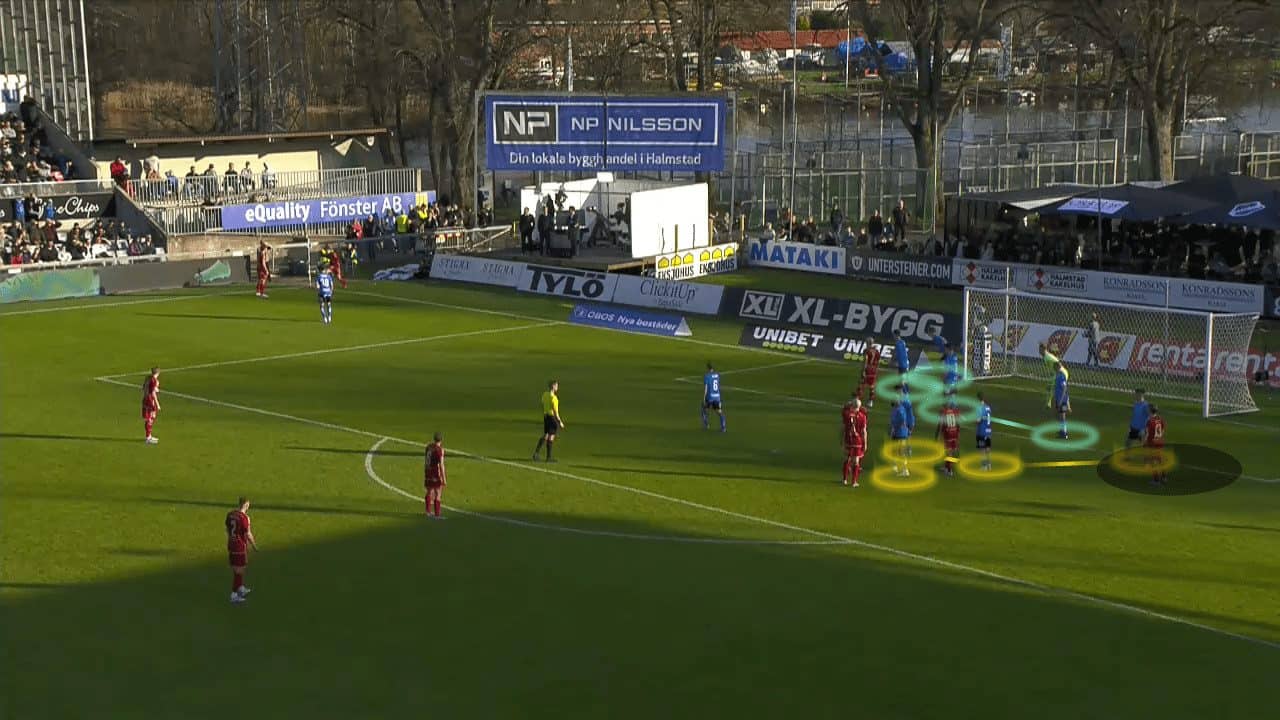
In the photo below, the short-option attacker, highlighted in green, has the time to get near the box before the cross because the one who should have supported the short-option defender was away inside the box, taking time to come to help. Our targeted player is highlighted in white, but he is not alone, as in the previous case, because he has a man-marker with him, highlighted in yellow.
Here, we should mention the main problem that a defender faces against short corners that are played to the far post, which is the orientation problem because he can’t give his back to the ball to mark the attacker, and his position doesn’t let him focus on the ball and the attackers at the same time, so the attacker becomes in his blind side.
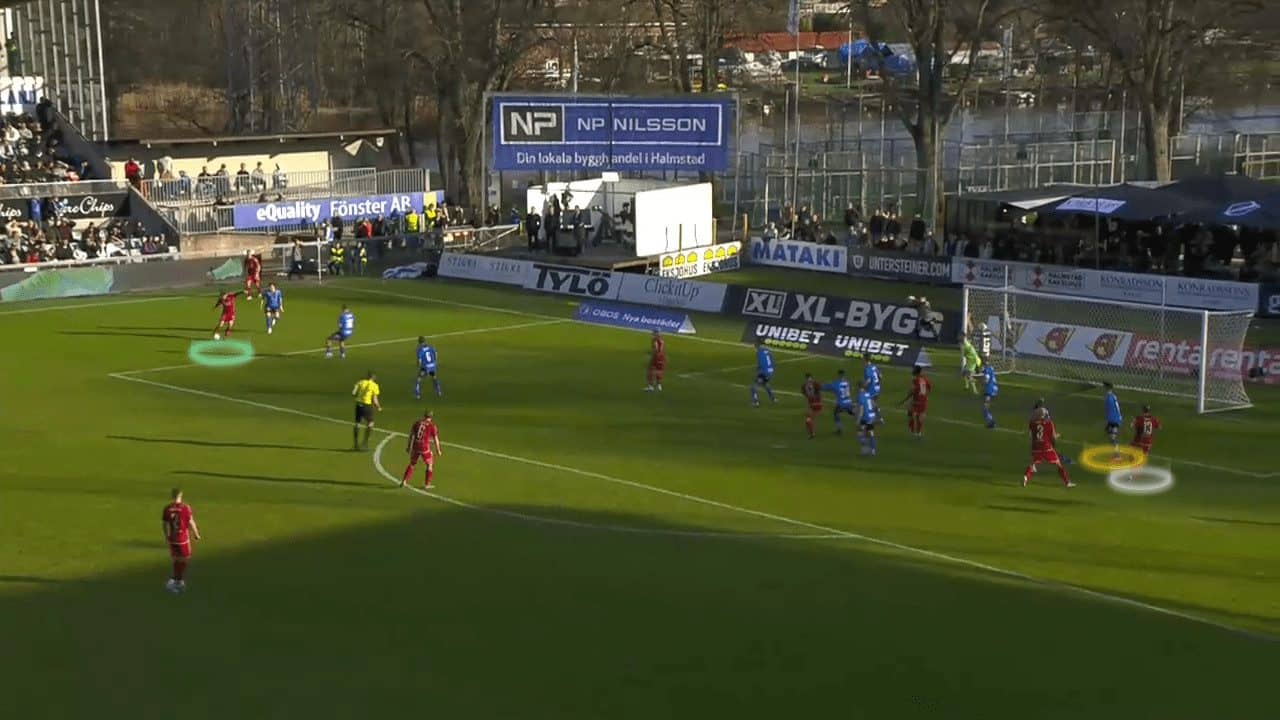
In the photo below, the plan works, and the targeted attacker becomes free, but the cross is a little inaccurate, stronger than supposed, so the ball gets out to a goal-kick.
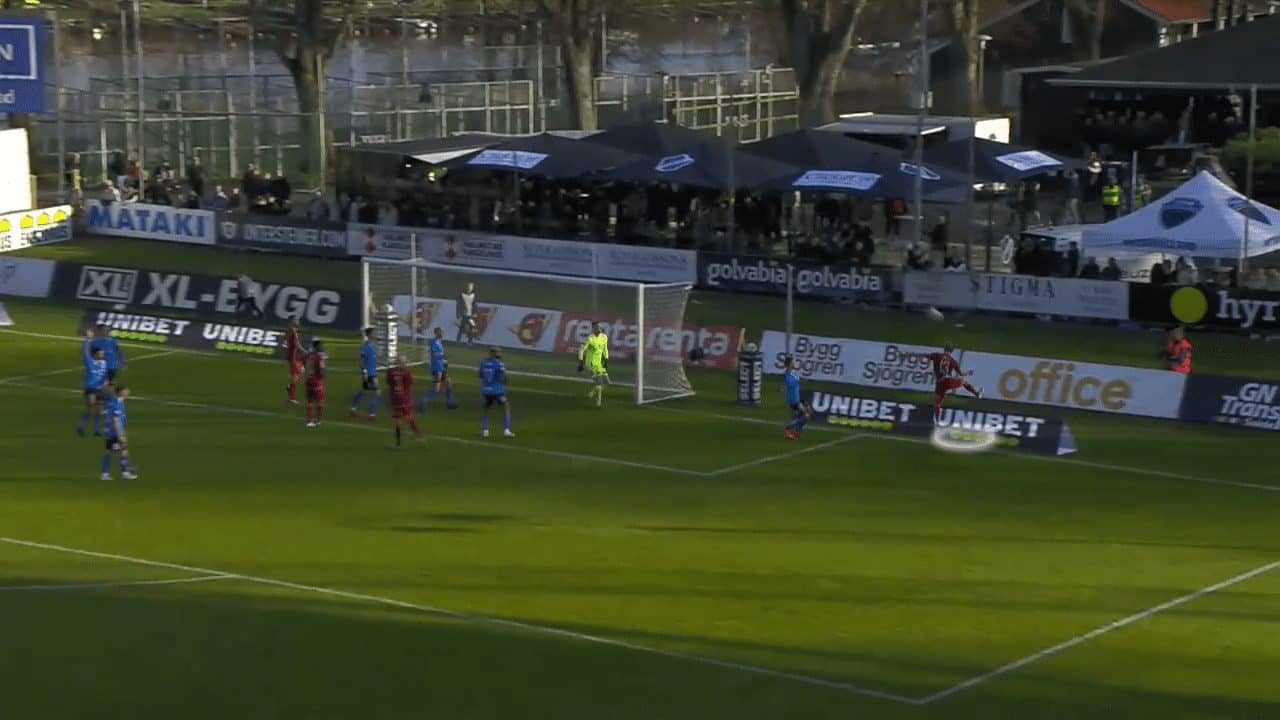
Conclusion
This analysis has explained the different routines that Djurgårdens relies on at corner kicks and how they became the team with the most goals from corner kicks in Allsvenskan with seven goals.
Our set-piece analysis has also discussed how they depend on their defender, Marcus Danielson, who is incredibly good at escaping from his man-marker, measuring the ball in the air, and then jumping from a steady state. His mates sometimes help him to escape from his man-marker using screens, and sometimes they use him to drag the defenders into the box. The ball is then played to the player who stands on the edge of the box

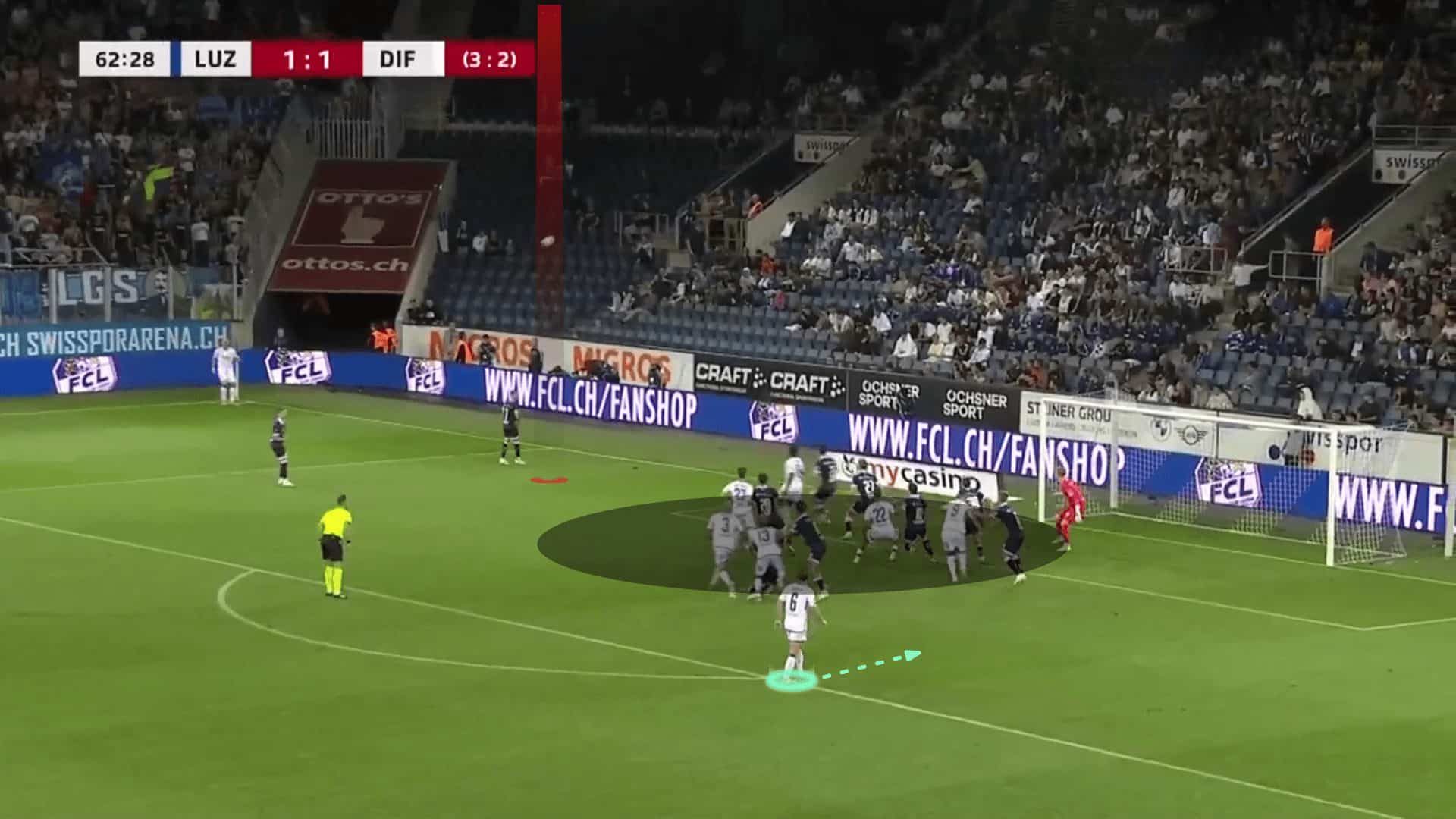




Comments